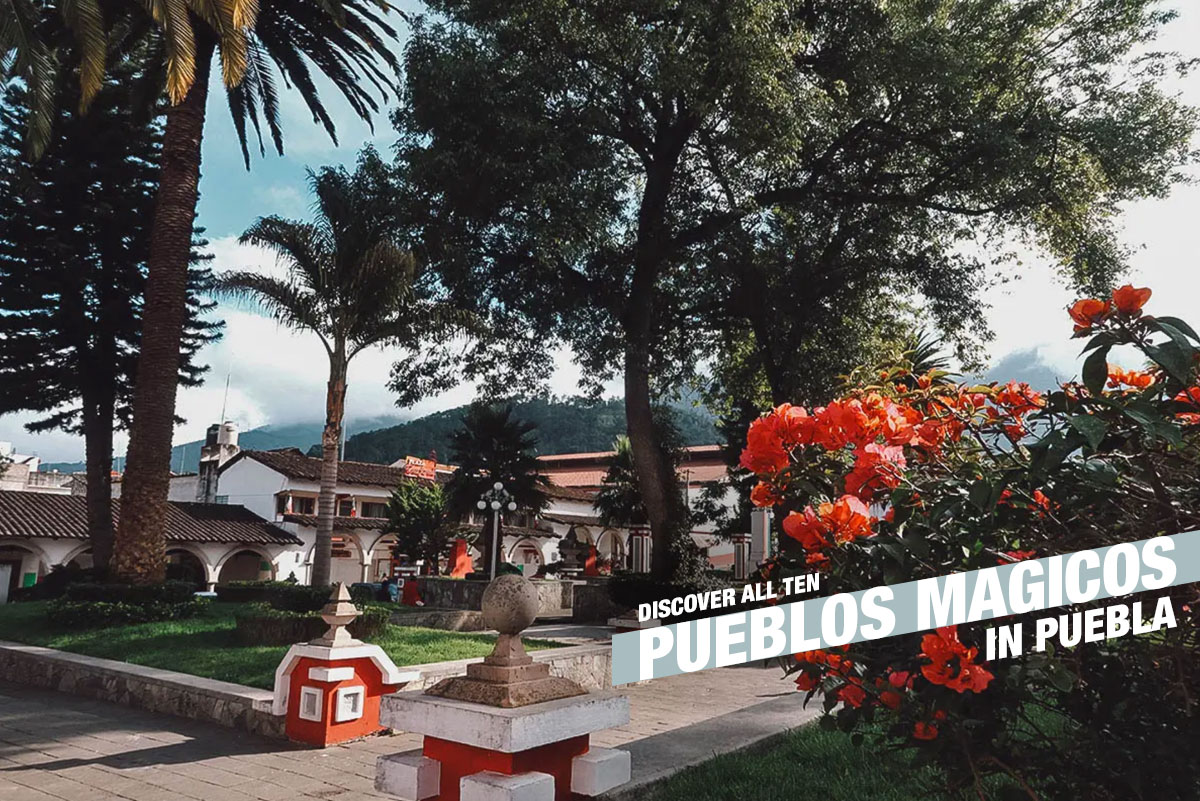EDITOR’S NOTE: When we lived in Puebla, the state was home to 10 pueblos magicos. Since then, two more towns – Huejotzingo and Teziutlan – have been declared magical towns.
The food in Puebla is some of the best and most interesting you’ll find anywhere in Mexico. Tasty dishes like cemitas and tacos arabes are a big reason why we decided to make Puebla our base in Mexico.
Another reason is its pueblos mágicos. As of this writing, the state of Puebla is home to twelve pueblos mágicos, the most of any state in Mexico (tied with Jalisco and Estado de Mexico). People who’ve been to Puebla City have probably taken a day trip to Cholula, but there are eleven more magical towns in this state that you need to know about and visit.
This roundup will tell you everything you need to know about planning trips to ten of the twelve pueblos mágicos in Puebla. Be sure to click on the link under each town to view the travel guide.
PUEBLOS MAGICOS QUICK LINKS
TOURS
To help plan your trip to these pueblos magicos, we’ve compiled links to recommended tours and other travel-related services here.
- Cholula and Atlixco Day Trip From Puebla City
- Zacatlán and Chignahuapan Day Trip From Puebla City
- Puebla, Cholula, and Tonantzintla Day Trip From Mexico City
TRAVEL-RELATED SERVICES
Save This on Pinterest!
No time to read this guide on the pueblos magicos in Puebla, Mexico? Click on the save button and pin it for later!
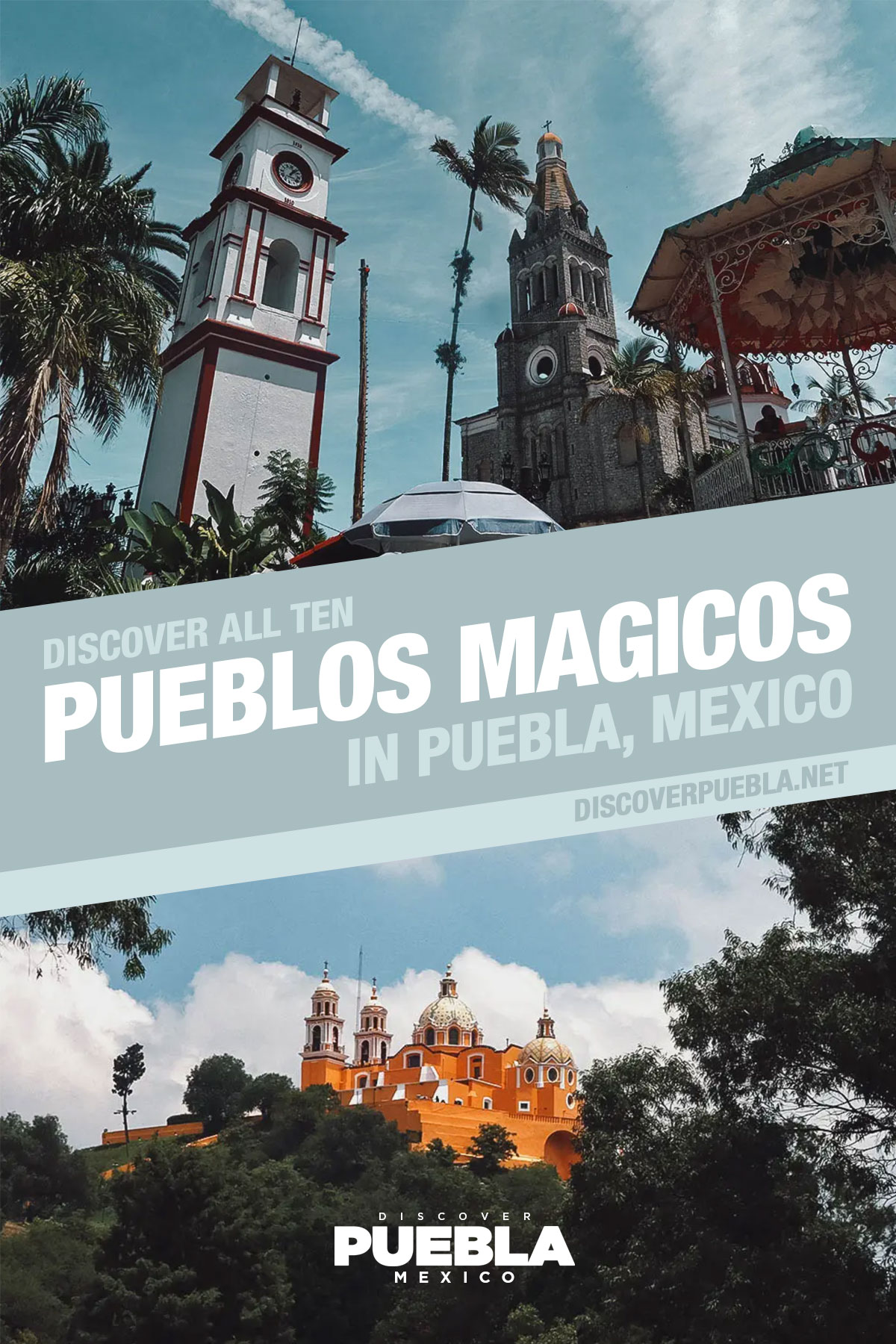
TABLE OF CONTENTS
MEXICO TOURIST CARD (FMM)
Before planning a trip to Puebla’s pueblos magicos, you may need to secure a tourist visa depending on what type of passport you carry. You can check iVisa.com for information on tourist visas to Mexico.
Whether or not you need a tourist visa, all visitors will still need an FMM (Forma Migratoria Múltiple) to enter the country. Often referred to as a “tourist card”, it’s something you can get if you’re traveling to Mexico by land or by air.
Tourists flying into Mexico are usually provided one by their airline (cost included in the airline ticket) while people arriving by land can get one at the border (with a fee).
You can also process the FMM ahead of time online through the INM website or iVisa.com. Click on the link to learn more about the FMM.
WHAT IS A PUEBLO MAGICO?
The term pueblo magico translates to “magical town”. It’s an initiative that was launched by Mexico’s Secretariat of Tourism in 2001 to promote a series of small towns in rural Mexico.
The Programa Pueblos Mágicos aims to increase tourism to towns that offer visitors unique and memorable experiences. Factors like natural beauty, cultural richness, hospitality, gastronomy, and historical relevance all play a role in the committee’s decision to award any town with the pueblo magico designation.
Because of the attention that the program brings to these towns, every pueblo magico is assigned a budget to improve its image, infrastructure, activities, and overall experience offered to tourists. The program also ensures that the towns maintain their traditions and promote their local festivals.
When the program started in 2001, only four towns were awarded the destination. In 2024, there are 177 pueblos magicos in Mexico, 12 of which are in the state of Puebla.
PUEBLOS MAGICOS, PUEBLA
Listed in the order in which they received the designation are the twelve pueblos magicos in Puebla. I’ll include a brief description for each town but be sure to click on the links to open up the comprehensive travel guide.
To help you understand where these pueblos magicos are in relation to Puebla City, I’ve pinned their location on the map below. Click on the link to view a live version of the map.

1. Cuetzalan del Progreso
Cuetzalan del Progreso was the very first town in Puebla to receive the pueblo magico designation. It was awarded the title in 2002 and it isn’t hard to see why.
Nestled in the Sierra Norte mountain region of Puebla, Cuetzalan is an exceedingly charming little town famous for its indigenous weekend market, many waterfalls, hiking trails, and caves. It’s home to the archaeological site of Yohualichan and is one of just a handful of towns that can claim to be the origin of the Danza de los Voladores.
If you’re looking for outdoor adventures and have an interest in indigenous culture and traditions, then you need to visit Cuetzalan. Check out our Cuetzalan del Progreso travel guide to help you plan your trip.

2. Zacatlán de las Manzanas
Declared a pueblo magico in 2011, Zacatlán de las Manzanas is another Sierra Norte mountain town that you need to visit, especially in August for its annual apple festival. Known for the hundreds of thousands of apple and fruit trees that grow in the region, the town is famous for its apple cider, wine, jams, and other derivative products.
Aside from its apple and cider production, Zacatlán de las Manzanas is also known for being the home of the Relojes Centenario company, the oldest monumental clock factory in Latin America.
Check out our detailed Zacatlán de las Manzanas travel guide to help you plan your trip.
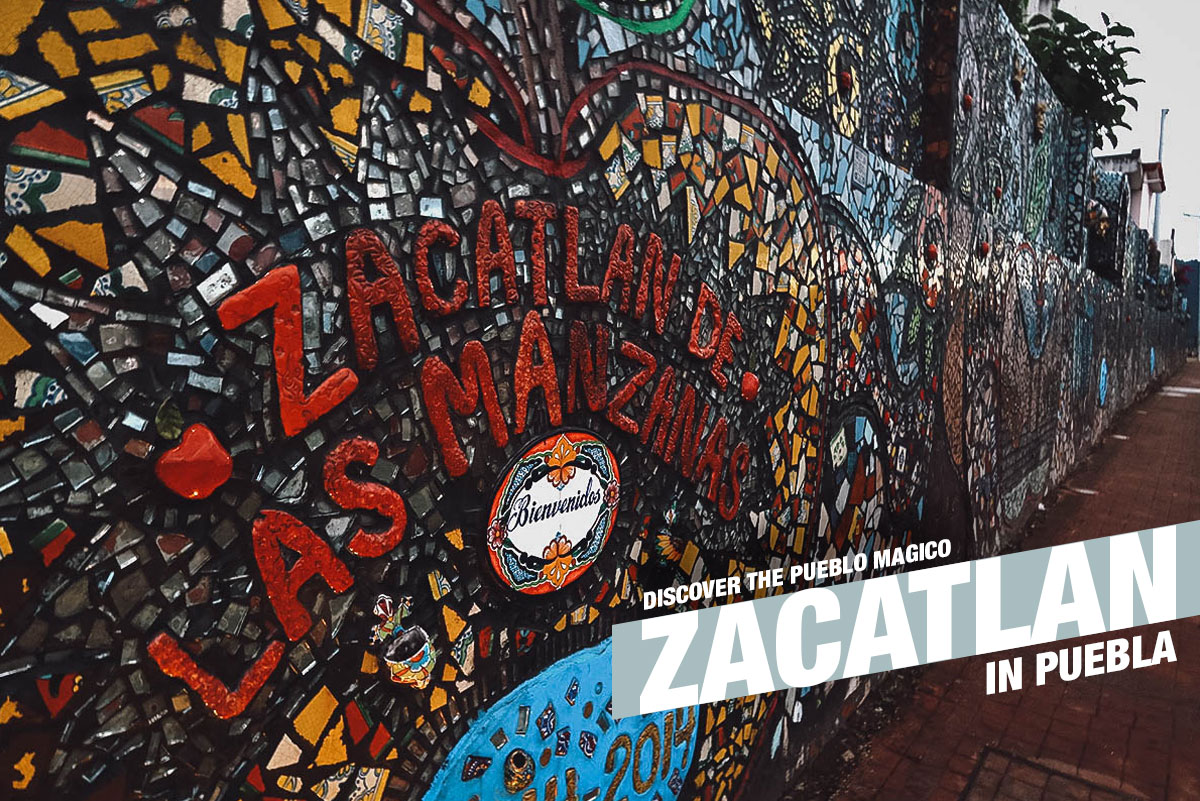
3. Pahuatlán del Valle
Receiving its designation in 2012, Pahuatlán del Valle is the smallest pueblo magico in Puebla. It’s a peaceful Sierra Norte mountain town known for its breathtaking natural beauty.
Aside from the beauty of its surroundings, Pahuatlán del Valle is famous for the production of amate bark paper. Like Cuetzalan del Progreso, it also has a claim to being the origin of the Danza de los Voladores tradition.
Check out our Pahuatlán del Valle travel guide to help you plan your trip.

4. Chignahuapan
Chignahuapan is one of my favorite pueblos magicos in Puebla. It was declared a pueblo magico in 2012 and is famous for the production of Christmas ornaments. It’s estimated that Chignahuapan produces around 70 million Christmas baubles a year, earning it the nickname the “Christmas spheres capital of Mexico”.
Aside from its Christmas bauble industry, Chignahuapan is also famous for the annual Festival de la Luz y Vida, as well as being one of just three natural habitats for axolotls in Mexico.
Like Cuetzalan del Progreso, Chignahuapan has a lot going for it so be sure to visit this town on your next trip to Puebla. You can refer to our Chignahuapan travel guide to help you plan your trip.
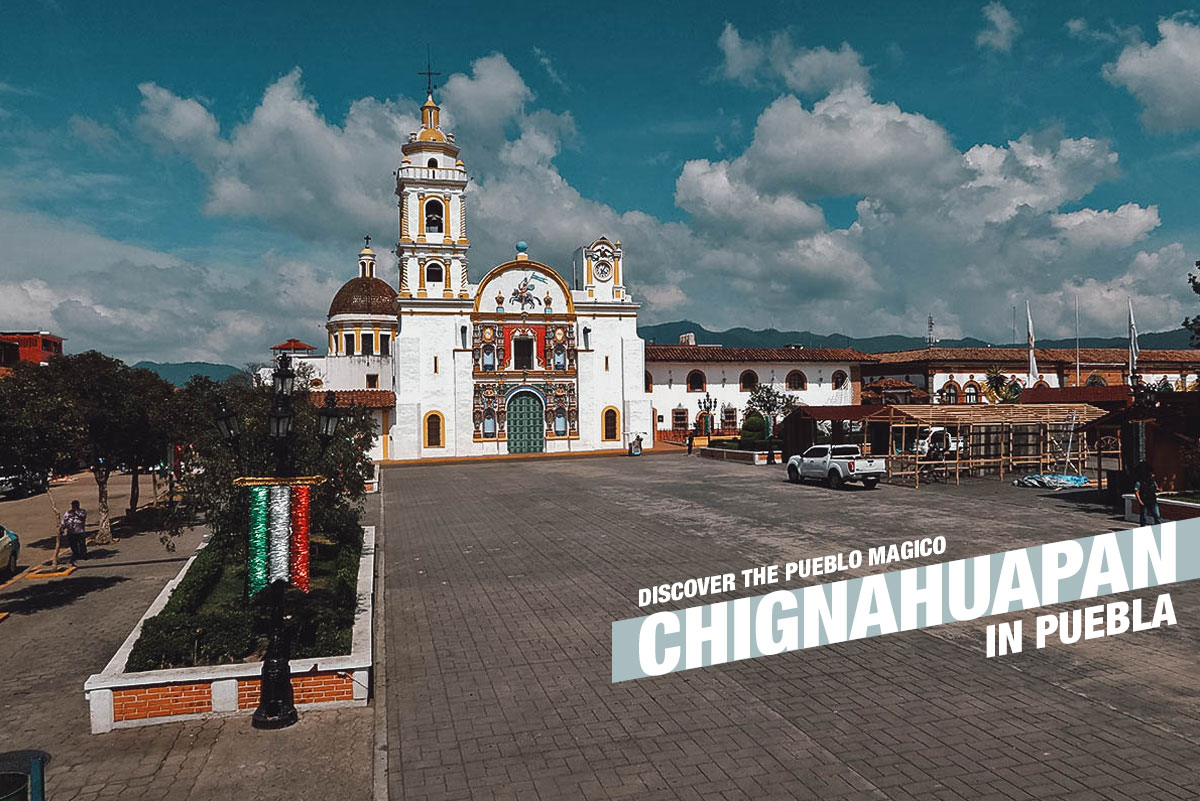
5. Cholula
Thanks to its proximity to Puebla City, Cholula is by far the most visited pueblo magico in Puebla. It’s located less than half an hour away, making it an easy day trip destination from the capital.
Declared a pueblo magico in 2012, Cholula is easy to get to but its proximity is hardly the only reason for it. It’s also one of its most interesting. Cholula is home to the largest pyramid in the world (by volume) which happens to be capped by a Spanish church built in the 16th century. It’s a spectacular sight and not something you can see just anywhere.
Aside from the Great Pyramid, Cholula is home to interesting museums and churches hailed as excellent examples of Mexican Baroque architecture. It’s also the biggest pueblo magico so there’s quite a lot to do here.
Check out our Cholula travel guide to help you plan your trip.

RELATED ARTICLE: Discover 15 Amazing Puebla Tours to Make the Most of Your Time in Puebla, Mexico
6. Ciudad de Tlatlauquitepec
Affectionately called “Tlatlauqui” by locals, Tlatlauquitepec was declared a pueblo magico in 2012. It’s also referred to as the “Garden of the Sierra” thanks to its lush forests, waterfalls, lagoons, and coffee plantations.
The most emblematic sight in Tlatlauquitepec is Cerro Cabezón, a small color-changing mountain or hill that gives the town its name. Tlatlauquitepec, in Nahuatl, means “hill that colors”. Check out our Tlatlauquitepec travel guide for more information.

7. Xicotepec de Juarez
Declared a pueblo magico in 2012, Xicotepec de Juarez is one of the most unique and interesting magical towns in Puebla. It’s interesting because it’s home to Xochipila, a pre-Hispanic shrine dedicated to the Aztec god of dance, art, and song. Xochipila is one of just two ceremonial centers of its kind in Latin America, the other being in Peru.
Xicotepec de Juarez is also known for its coffee production and its brief stint as the capital of the Mexican Republic. Check out our Xicotepec de Juarez travel guide for more information.

8. Atlixco
Like Cholula, Atlixco is located less than an hour away by bus, making it an easy day trip destination from Puebla City.
Declared a pueblo magico in 2015, it’s also referred to as “Atlixco de las Flores” thanks to its production of flowers, ornamental plants, and fruit trees. The town is described as having one of the best climates in the world, which makes it ideal for the cultivation of plants and flowers.
Check out our Atlixco travel guide to help you plan your trip.

9. Huauchinango
One of the newer members in the Puebla pueblo magico family, Huauchinango was declared a magical town in 2015. It’s famous for the Señor del Santo Entierro venerated image which gave rise to the town’s annual flower fair.
Aside from the fair, Huauchinango is also known for the Tenango de las Flores Dam which was one of the filming locations for the Golden Globe award-winning movie – Tizoc.
Check out our Huauchinango travel guide to help you plan your trip.

10. Tetela de Ocampo
Tetela de Ocampo is the newest pueblo mágico in Puebla. This peaceful Sierra Norte mountain town received that distinction in 2020, thanks in part to the role some of its more famous citizens played in the Battle of Puebla.
Tetela de Ocampo is the birthplace of Juan Crisóstomo Bonilla and Juan Nepomuceno Méndez, two of the three “Juans” in “Los Tres Juanes”. Los Tres Juanes literally means “the three Juans” and refers to three Mexican generals who fought against the French in the famed Battle of Puebla.
Check out our Tetela de Ocampo travel guide for more information.
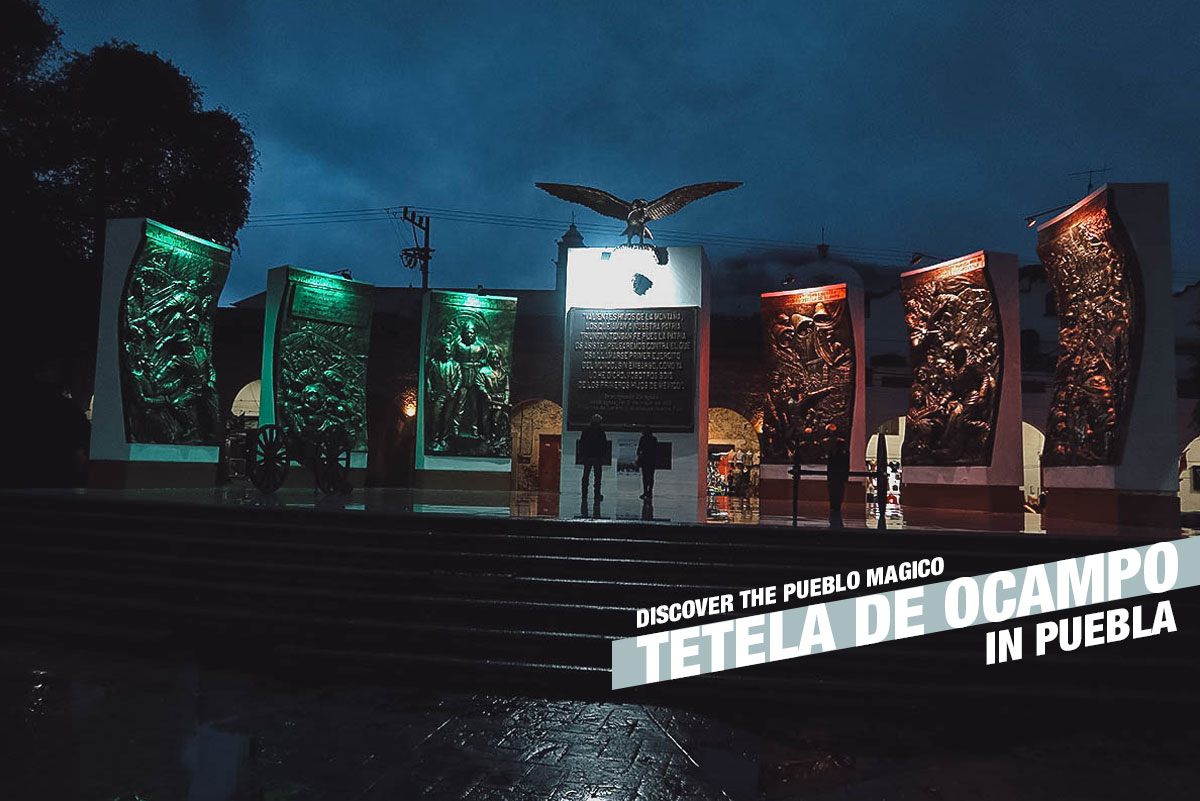
11. Huejotzingo
Together with Teziutlan, Huejotzingo was a declared a pueblo magico in 2023, after we left Mexico. It’s a shame because it’s located less than an hour from Puebla City, making it another great day trip destination from the state capital.
Known for its cider and blackberry production, Huejotzingo is home to one of the most important carnivals in Mexico – the Carnival of Huejotzingo – which happens every year in the morning of the Saturday before Ash Wednesday.
12. Teziutlan
Teziutlan is the newest pueblo magico located in the Sierra Norte mountain range of Puebla. Known as La Perla de la Sierra (“Pearl of the Mountain Range”), it’s located near the border with Veracruz and is known for its abundance of natural beauty and rich gastronomy.
Based on what I’ve read, tlaloyos stuffed with alberjon (whole yellow peas) are a must-try in Teziutlan. I’m definitely looking forward to that on our next trip back to Puebla and Mexico!
FREQUENTLY ASKED QUESTIONS (FAQs)
1. Are the pueblos magicos in Puebla worth visiting?
Yes, but depending on your personal preferences, some may be worth visiting more than others. But do understand that these pueblos magicos are small towns so they won’t have as much to do as bigger cities like Mexico City, Puebla, or Guadalajara.
2. If I can’t go to all, then which pueblos magicos should I visit?
This is a difficult question to answer because everyone has their own preferences. It depends on how much time you have and what you’re into.
If you don’t have a lot of time, then Cholula and Atlixco would be the easiest to visit from Puebla City. If you like nature and the outdoors, then any of the Sierra Norte pueblos magicos would be awesome. If you’re into local culture, then Cuetzalan del Progreso would be my top choice. If animals are your thing, then the axolotls in Chignahuapan are definitely something you need to see.
Everyone has their own preferences but for me, I liked Cuetzalan del Progreso and Chignahuapan the best, followed by Tlatlauquitepec and Tetela de Ocampo.
3. Are the pueblos magicos in Puebla safe to visit?
In my experience, yes. I’ve visited ten of the twelve pueblos magicos and I never felt threatened or unsafe in any of them.
I did get a few stares in some of the less frequently visited pueblos magicos but they were more out of curiosity. Some of these towns get few foreign visitors so seeing me must have been a bit strange for some of the locals.
Some parts of Mexico have a reputation for being unsafe but Puebla is considered one of the safest states in Mexico. As long as you prioritize safety and observe the usual travel precautions – stay in populated areas, don’t be flashy, don’t walk alone at night, etc – then you should have nothing to worry about in these pueblos magicos.
The US, Canada, and UK governments offer broad travel advisories to Mexico but I highly recommend keeping an eye on the Puebla Tripadvisor travel forum as well. If there are any recent incidents you need to know about – things like muggings, landslides, shootings, kidnappings, etc – then chances are, you’ll learn about them there first. It’s a great place to ask questions as well.
4. What’s the most popular pueblo magico in Puebla?
Definitely Cholula. Its proximity to Puebla makes it the most accessible and by far the most visited.
5. What’s the hardest pueblo magico to visit in Puebla?
None were particularly difficult to get to but I’d probably say Pahuatlan del Valle. There are no direct buses from Puebla so you’ll need to go to Tulancingo, Hidalgo first to get there.
6. Which Pueblo Magico receives the fewest foreign visitors?
I couldn’t find any tourism data but my guess would be Pahuatlan del Valle, because it’s the smallest and one of the most remote.
7. Which Pueblo Magico had the best food?
None in particular stood out but I’d probably say Cuetzalan del Progreso and Tlatlauquitepec.
8. Do you recommend visiting all these pueblos magicos?
It depends. If you have the time and like visiting off-the-beaten-path destinations, then I’d say yes. Most of these pueblos magicos are small and uneventful but they do make you feel like you’re experiencing things relatively few foreigners get to see. And that is cool.
OUR TRAVEL GEAR
Here’s some of the travel equipment and gear I brought with me to Puebla and Mexico. (Amazon affiliate links)
Disclosure
Some of the links in this guide are affiliate links. What that means is that we’ll earn a small commission if you make a purchase at no added cost to you. As always, we only recommend products and services that we use ourselves. We really appreciate your support as it helps us keep this free Puebla travel website going. Thank you!

